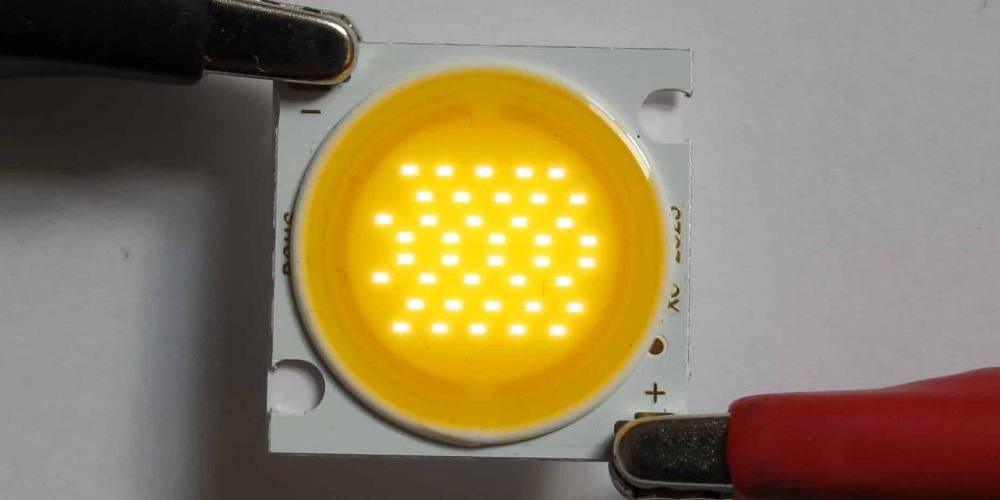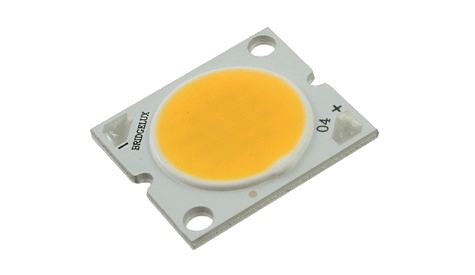OUTLINE:
Uncovering the Mystery of Chip on Board LED
 197
197In this era of rapidly changing lighting technology, chip on board (CoB) LEDs have emerged, completely changing the way we illuminate spaces.

Image Source: RAYPCB
CoB technology integrates multiple LED chips onto a single substrate, which not only improves efficiency but also brings better performance and design flexibility. In this article, let's delve into the key features and benefits of on-chip LED chips, and see why they are becoming increasingly popular among consumers and manufacturers.
An Introduction: What Is A Chip on Board LED Light
Chip on Board (CoB) LED lights are made by tightly attaching many LED chips to a circuit board to create a compact lighting module. By integrating the chips together in this way, without the need for individual LED packages, the light can be denser, brighter, and the heat dissipation can be better. Unlike traditional LEDs, which may produce some light spots, CoB LEDs emit light that is very uniform, without glare, and looks more natural.
Due to its high efficiency and good performance, CoB LED lights are now popular in household, industrial, and commercial lighting, as they are both aesthetically pleasing, energy-efficient, and durable.
What Are the Main Advantages of Using Chip on Board LED

Image Source: Silicon Lightworks
The main benefits of using Chip on Board (CoB) LED lights are quite significant:
Higher brightness and better light quality
CoB LED integrates multiple LED chips into one module, resulting in higher brightness and even and smooth lighting. This way, there will be no "light spots" like traditional LEDs, and the light distribution will be more consistent and natural.
More energy-efficient
Due to the tight integration of multiple chips, CoB LEDs reduce energy loss and use less electricity at the same brightness. This not only saves electricity but also reduces carbon emissions.
Better heat dissipation
CoB design provides stronger heat dissipation, allowing LEDs to maintain optimal performance and longer lifespan. Good heat dissipation makes LEDs less prone to overheating, making them reliable even after prolonged use and suitable for various occasions.
Small size, versatile applications
CoB LED has a small volume and saves space, making it particularly suitable for places with size and weight requirements, such as portable devices, compact lighting fixtures, or ultra-thin lighting. Small size, more flexible design, and can be instalLED as you want.
Longer lifespan
CoB LED has high efficiency, durability, and much longer lifespan than other types of lamps. This way, maintenance costs are low and replacement is minimal. In the long run, CoB LED is a cost-effective lighting solution.
Reduce glare and protect eyes
CoB LED has uniform light, less glare, and is more eye friendly, making it particularly suitable for places that require visual comfort, such as offices, schools, or homes.
Major Difference between COB LED and Traditional LED
Let's talk about the main differences between Chip on Board (CoB) LED lights and traditional LED lights:
Light source design
CoB LED: Multiple LED chips are directly placed on a circuit board to create a compact and dense light-emitting module with particularly uniform light.
Traditional LED: uses individual LED components, with each chip mounted on a large board. Each diode emits light on its own, so the light may be a bit "mottLED".
Brightness and Light Quality
CoB LED: High brightness, uniform light distribution, particularly smooth appearance, without light spots or shadows.
Traditional LED: There are multiple light emitting points with uneven light distribution, especially in high-power situations where the spot may be clearly visible.
Efficiency and power consumption
CoB LED: Because there is less energy loss between chips, it is more energy-efficient, achieving the same brightness with less electricity consumption.
Traditional LED: To achieve the same brightness, more electricity is needed because the chip is separate and there are other components.
Dissipate heat
CoB LED: It has particularly good heat dissipation because a single substrate can spread heat more evenly. This way, it is less likely to overheat and the lifespan of the LED is longer.
Traditional LED: The heat dissipation efficiency may be lower, and it is often necessary to add heat sinks or cooling devices to prevent overheating.
Volume and design flexibility
CoB LED: Small size, space saving, especially suitable for places that require small size and compact design.
Traditional LEDs: Because diodes and other components are separate, they are larger in size and design, making them less flexible.
Cost and Applicable Scenarios
CoB LED: Although it may be expensive at first, it is more cost-effective in high output situations due to its high efficiency and durability. CoB LED is the most suitable for places that require large-scale and uniform lighting, such as tube lights, street lights, and floodlights.
Traditional LED: In small, low output areas such as indicator lights or small lighting fixtures, traditional LED is cheaper because brightness and uniformity are not as important at this time.
The Ways of Chip on Board LED Improve Thermal Management

Image Source: Silicon Lightworks
Let's talk about several tips for heat management of Chip on Board (CoB) LED lights:
Compact arrangement of chips
CoB LED lights tightly gather multiple LED chips together and place them on a substrate, so that heat can be evenly dispersed within a small area. In this way, there are fewer hotspots, the temperature fluctuations of the entire module are reduced, and the performance is more stable.
Single bottom plate reduces thermal resistance
In CoB technology, LED chips are directly mounted on a thermally conductive substrate, which is usually made of aluminum or ceramic. In this way, the common thermal resistance between multiple layers in traditional LED lights is greatly reduced, and heat can be more effectively transferred from the LED chip to the surrounding heat sink.
Better integration of heat sinks
The heat source of CoB LED lights is very concentrated in one place, so it is easy to connect with the heat sink. In this way, the heat sink is more effective and does not need to handle the heat dispersed by multiple LED components. If the heat sink is well integrated, the overall heat dissipation management will be better, and the lifespan of LED lights will be longer.
More advanced heat dissipation materials
Manufacturers of CoB LED lights often use advanced thermal conductive materials in LED modules, such as aluminum PCB boards or ceramic substrates. These materials have excellent thermal conductivity and can quickly dissipate heat from the chip, making CoB LED lights less prone to overheating and able to operate at lower temperatures.
Low working temperature and long lifespan
CoB LED lights have good heat dissipation, so the working temperature is low and the pressure on the LED chip is reduced. In this way, the lifespan of CoB LED lights is longer, and the brightness can be maintained well without quickly dimming.
Are Chip on Board LEDs Energy-efficient
The answer is Yes, Chip-on-Board (CoB) LEDs are very energy-efficient. By integrating multiple LED chips onto a single substrate, CoB LEDs achieve higher brightness with less power, thanks to improved lumen output per watt. This design minimizes energy loss between chips, as well as excess heat, ensuring that more energy is converted to light rather than wasted. As a result, CoB LEDs offer both energy savings and consistent performance, making them an ideal choice for environmentally-friendly and cost-effective lighting solutions.
Final Verdict
Chip-on-Board (CoB) LEDs offer advanced lighting performance with energy efficiency, superior thermal management, and a uniform light output. As the technology behind CoB LEDs continues to evolve, they are quickly becoming a top choice for sustainable, high-quality lighting across various applications.

Disclaimer: The views and opinions expressed by individual authors or forum participants on this website do not represent the views and opinions of Chipsmall, nor do they represent Chipsmall's official policy.

share this blog to:

